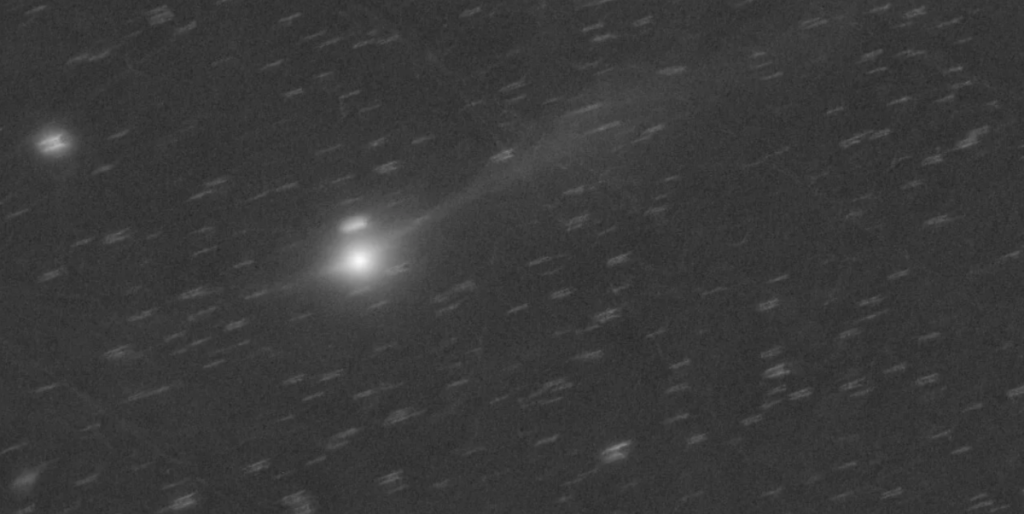The sight offers one of the clearest looks yet at a visitor from another star.
Others are reading now
Astronomers observing the rare interstellar comet 3I/ATLAS have captured a dramatic new image showing its ion tail expanding and brightening as the cosmic traveler moves deeper into the inner solar system.
Tail getting longer
The image, recorded by the Virtual Telescope Project on November 10 at 11:31 p.m. EDT (0431 GMT on November 11), shows a sharply defined, luminous tail stretching about 0.7 degrees across the sky.
The composite photo, created from 18 two-minute exposures taken by robotic telescopes in Manciano, Italy, reveals that 3I/ATLAS is releasing gas and dust more intensely than before.
“Exploiting the unusually good weather of this season, we imaged the interstellar comet 3I/ATLAS again, recording a much more developed ion tail,” said Gianluca Masi, astronomer and founder of the Virtual Telescope Project.
“Looking at the picture, we see how the ion tail of 3I/ATLAS is clearly showing better and better.”
What creates the glowing tail
Also read
An ion tail forms when sunlight strips electrons from gas molecules escaping the comet’s surface.
These charged particles are then pushed away from the sun by the solar wind, forming a long, straight tail that always points away from the sun.
This differs from a dust tail, which curves gently along the comet’s orbit.
In the new image, a faint “anti-tail” also appears extending in the opposite direction, an optical effect caused by the observer’s viewpoint.
Astronomers say the clear increase in brightness and structure suggests the comet’s ices are sublimating more vigorously as it warms, releasing jets of gas and fine dust into space.
A rare interstellar visitor
Also read
3I/ATLAS, officially catalogued as C/2025 N1 (ATLAS), is only the third known object to enter our solar system from beyond the stars. It follows 1I/‘Oumuamua in 2017 and 2I/Borisov in 2019.
Unlike those earlier visitors, this comet is bright enough to be studied in detail using Earth-based telescopes.
Scientists believe the comet may contain large amounts of carbon dioxide ice and other volatile materials.
Studying how these substances react to sunlight could offer clues about the environment in the distant system where 3I/ATLAS formed, helping researchers understand how comets evolve in different parts of the galaxy.
Sources: Space.com, The Virtual Telescope Project
Also read
This article is made and published by Kathrine Frich, who may have used AI in the preparation


